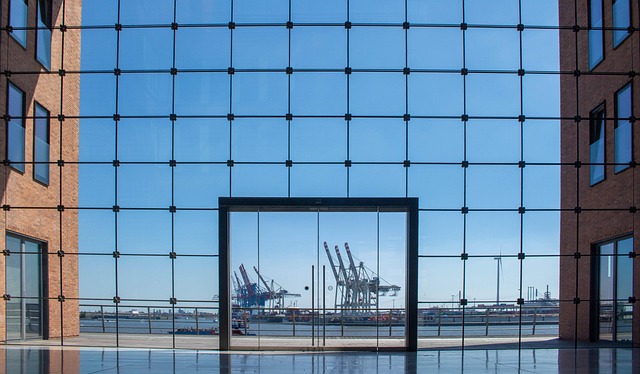In today's digital era, warehouses have emerged as real estate assets crucial for e-commerce success. Their strategic locations and ample space facilitate efficient inventory management, rapid delivery, and improved customer satisfaction, directly impacting the competitive online marketplace. As e-commerce grows across sectors, these facilities act as central hubs for product storage, organization, and distribution, driving industry expansion by meeting demand, controlling costs, and enhancing customer experiences.
The exponential growth of e-commerce has reshaped retail landscapes globally, demanding agile and strategic warehousing solutions. This article delves into the pivotal role warehouses play in facilitating the online shopping boom. We explore key considerations for optimizing real estate assets, from strategic location choices influenced by consumer behavior and transportation hubs to long-term planning for scalable spaces. Additionally, we highlight successful e-commerce companies and their innovative warehouse management strategies, emphasizing the importance of advanced technologies for streamlining inventory processes and enhancing operational efficiency.
The Role of Warehouses in E-commerce Logistics

Warehouses play a pivotal role in the intricate logistics network that powers e-commerce’s rapid growth. As online retail continues to dominate, efficient inventory management and distribution become paramount. These facilities serve as strategic hubs, facilitating the seamless movement of goods from suppliers to customers across vast geographic areas.
The real estate aspect is significant, as well. E-commerce giants require vast spaces to store their products, leading to a surge in demand for industrial properties. Strategically located warehouses enable faster delivery times and better cost control, directly impacting customer satisfaction levels. This, in turn, contributes to the overall success of e-commerce businesses in an increasingly competitive digital marketplace.
– Understanding the current landscape of e-commerce and its rapid growth

In today’s digital era, e-commerce has experienced a remarkable surge in popularity, transforming the way businesses operate and consumers shop. This booming expansion is evident across various sectors as online retail continues to outpace traditional brick-and-mortar stores. The current landscape of e-commerce is characterized by rapid growth, driven largely by changes in consumer behavior due to the convenience and accessibility of online shopping platforms.
The real estate sector has been significantly impacted by this trend. Warehouses, once considered secondary to retail spaces, are now at the forefront of e-commerce fulfillment. With the increase in online orders, businesses require robust logistics infrastructure to manage inventory efficiently and meet delivery expectations. This shift has led to a rise in demand for warehouse spaces, prompting developers and investors to focus on optimizing existing facilities or constructing new ones to support this dynamic industry.
– How warehouses act as a vital link in the supply chain for online retailers

Warehouses play a pivotal role in supporting the booming e-commerce industry by acting as crucial links within the supply chain for online retailers. These facilities serve as strategic hubs where products are stored, organized, and then efficiently distributed to meet the ever-increasing demand driven by digital sales channels. With e-commerce’s rapid expansion, the need for well-positioned and optimized warehouse real estate has become increasingly critical.
E-commerce businesses rely on warehouses to streamline their operations, offering a range of advantages such as reduced delivery times and improved order accuracy. The strategic location of these storage centers enables retailers to quickly fulfill customer orders, ensuring timely deliveries across vast geographic areas. This seamless integration between warehouses and online retail is instrumental in fostering a positive customer experience and driving the continued growth of the e-commerce sector.






